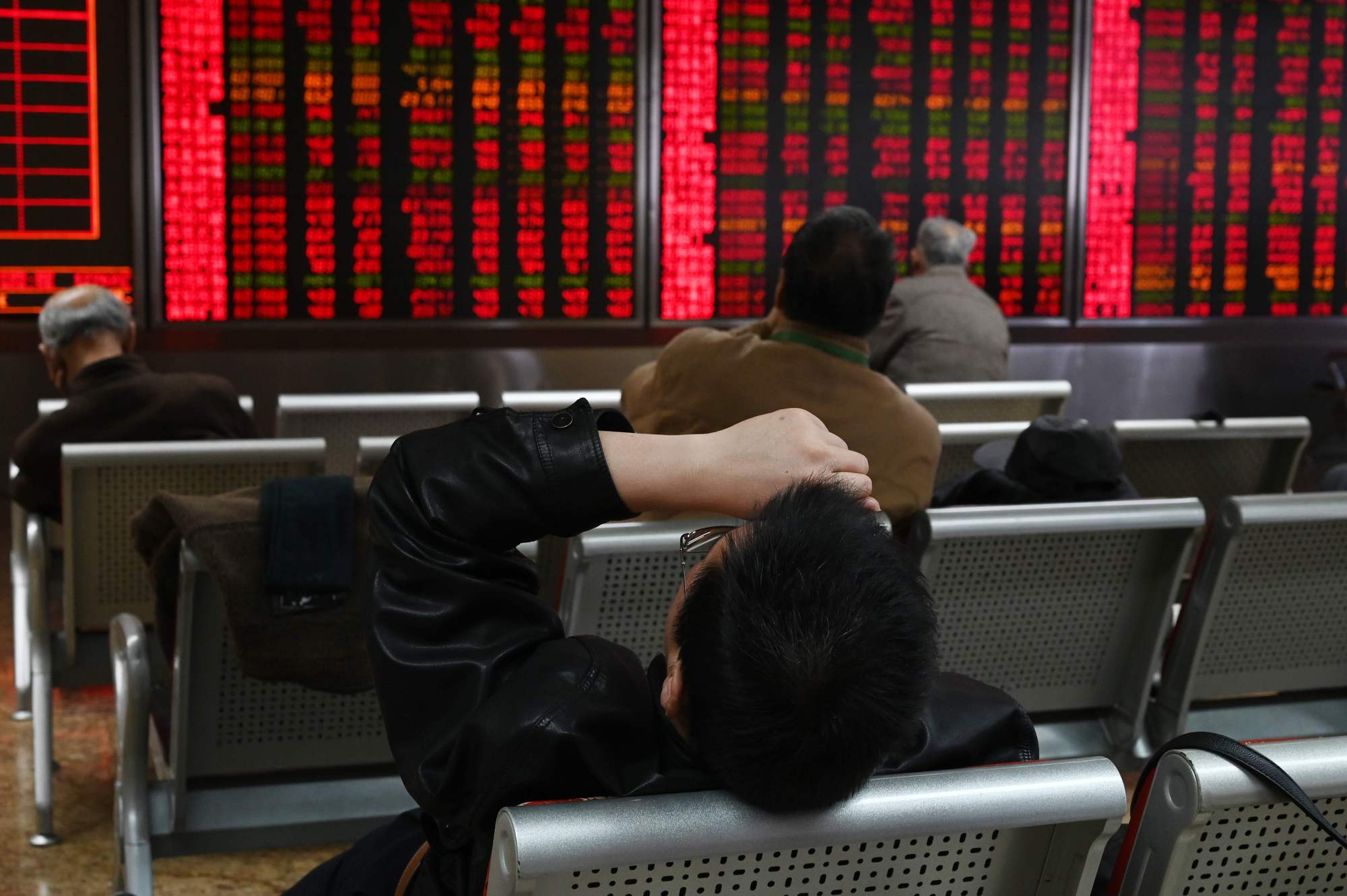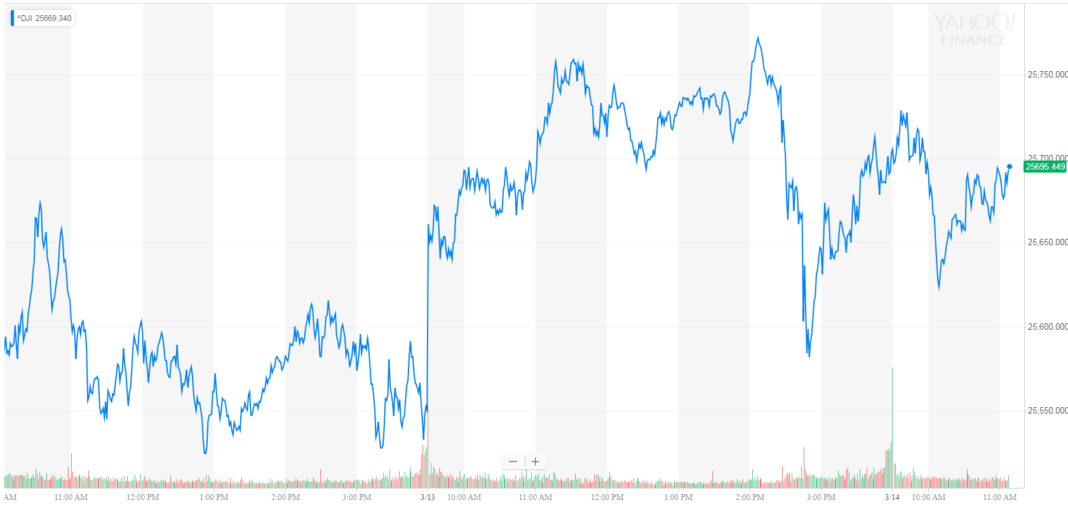[ad_1]
The Dow and broader U.S. stock market slammed on the brakes Thursday as Boeing headed for its eighth consecutive decline and China’s economy showed a further cooling trend. A delay in U.S.-China trade negotiations also raised the specter of a prolonged tariff war that would further undermine global economic health.
Dow Stalls as US Stock Market Fails to Extend Gains
All of Wall Street’s major indexes traded mixed-to-lower through the morning, reflecting a tepid pre-market session for Dow futures. The Dow Jones Industrial Average declined by as much as 83 points before paring losses. It was last down 6 points, or 0.02%, at 25,696.65.
Join CCN for $19.99 per month and get an ad-free version of CCN including discounts for future events and services. Support our journalists today. Click here to sign up.
Boeing Co (BA), the Dow’s biggest component by weight, was down around 1% and on track for its eighth consecutive drop. The aerospace contractor is shedding market cap due to safety concerns of its 737 MAX 8 airliners. Dozens of countries have suspended Boeing 737s from flight, threatening $600 billion in back orders.
The broad S&P 500 Index of large-cap stocks slipped 0.1% to 2,809.27. On Wednesday, the S&P 500 approached five-month highs on better than expected manufacturing data.
By Thursday, seven of 11 S&P 500 sectors had reported declines. Materials shed 0.6% as a sector. Discretionary shares and industrials were off 0.4% apiece.
The Nasdaq Composite Index declined 0.2% to settle at 7,631.13.
After falling to its lowest levels of 2019, the CBOE Volatility Index rose slightly on Thursday. The so-called “investor fear index” climbed nearly 1% to 13.52 on a mean-reverting scale where 20-25 represents the historic average.
China Growth Remains a Concern

Have U.S.-China trade talks hit a roadblock? Both sides are not expected to meet again until April. | Source: Shutterstock.
Investors were on edge after China reported another mixed batch of economic data on Thursday showing a further cooling in manufacturing demand. Annual industrial production rose just 5.3% in the January-February period, down from 5.7% in December, the National Bureau of Statistics reported. Analysts had forecast growth to cool to just 5.5%.
Although annual fixed-asset investment grew at a better-than-expected 6.1% in January-February, it was down sharply from last year’s 14.7% uptick.
Seasonal influences and the timing of the Lunar New Year holiday make it more difficult to gauge China’s economic performance at the beginning of the year. However, the trend has been clearly lower, as evidenced by the sharp slowdown in gross domestic product (GDP) and foreign direct investment. Annual retail sales grew as expected in the first two months of 2019 but remain well below levels seen in recent year.
The United States and China were said to be concluding a trade agreement imminently, but it appears that much more needs to be discussed before a comprehensive deal is finalized. The superpowers aren’t expected to meet again until April amid concerns that China’s industrial policy isn’t as flexible as the Trump administration would like.
[ad_2]
Source link




